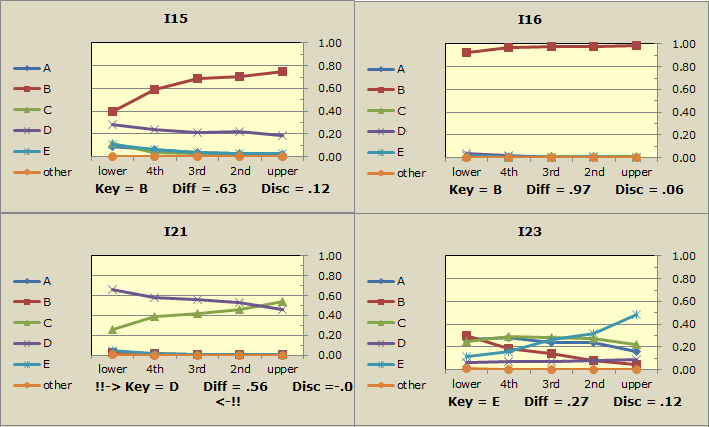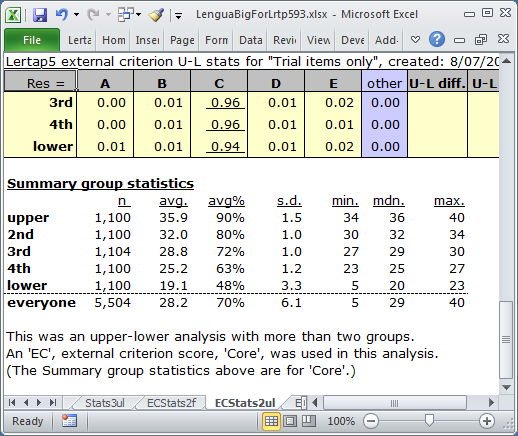U-L statistics with an external criterion
Stats1ul reports become "ECStats1ul" reports when an external criterion analysis has been selected.
The discussion found in this topic is based on results from the LenguaBIg dataset. The "Core" score was used as the external criterion, and the second subtest, "Trial items only", was selected for the analysis. Note that in this example we have a "ECStats2ul" report as we're dealing with the second subtest in the dataset.
Note: the display below uses "upper" and "lower" as group labels. These are now known as groups "Grp1" and "GrpX", as mentioned in the previous topic.

The groups in an external criterion analysis are formed by using the external criterion score, which in this case was called "Core". Otherwise, all statistics are formed in the manner described in the previous topic.
Note the negative U-L disc value for I21. More members of the lower group got this item right than in the upper group. You can see this is the corresponding quintile plot:

Of these four items, only I15 shows a tendency to fan out. I16 is very easy. I23 is quite difficult. I21 is goofy: the trace line for the keyed-correct option, D, decreases as we move across the plot, the opposite of what would be expected. On the other hand, one of I21's distractors, option C, increases from left to right, which is also the opposite of expected. (This pattern is often found when an item has been "incorrectly keyed". It could be that an error has been made, and the keyed-correct option for this item should be changed to C. However, even in this case there would still be many students in the upper group, suggesting that option D may be a plausible correct answer. Indications are that I21 requires revision before being used again.)

This snapshot shows how the table at the bottom of an ECStatsul report looks when an external criterion has been used to form the groups.
